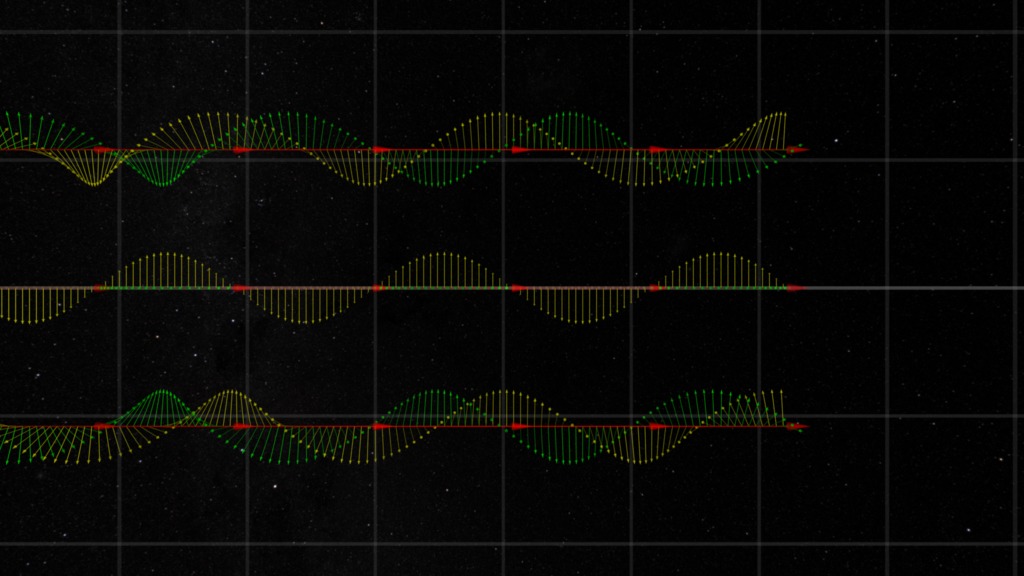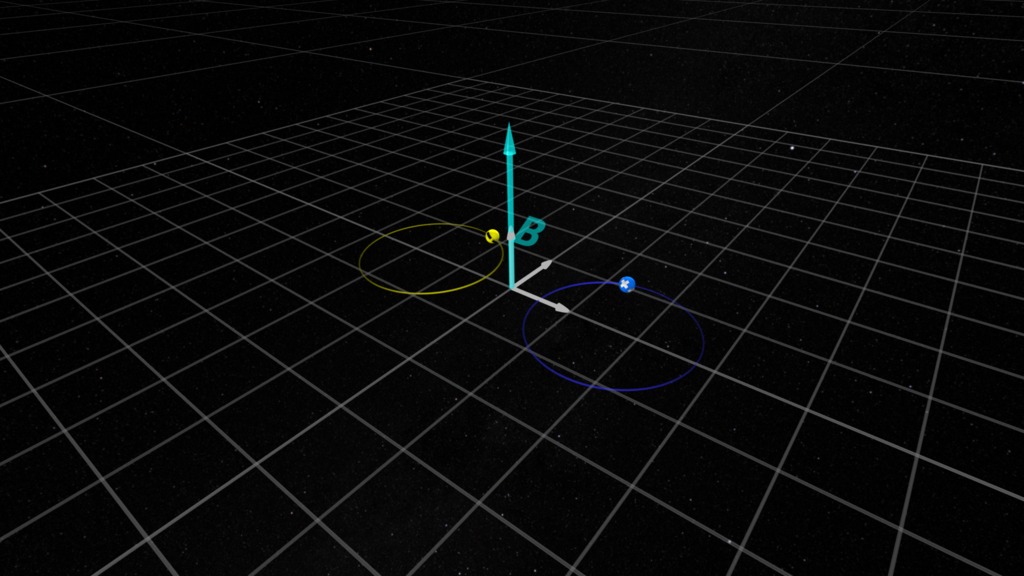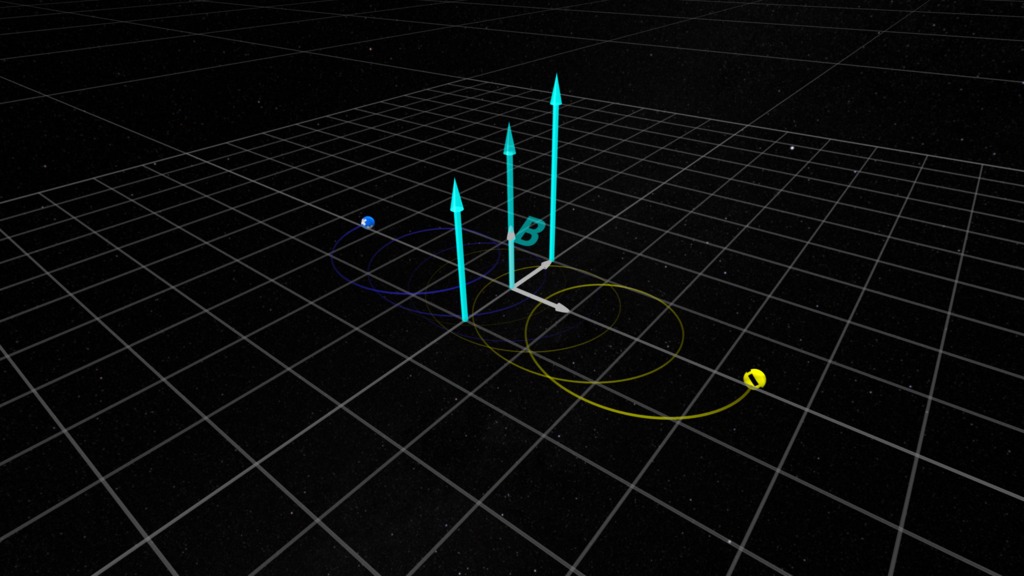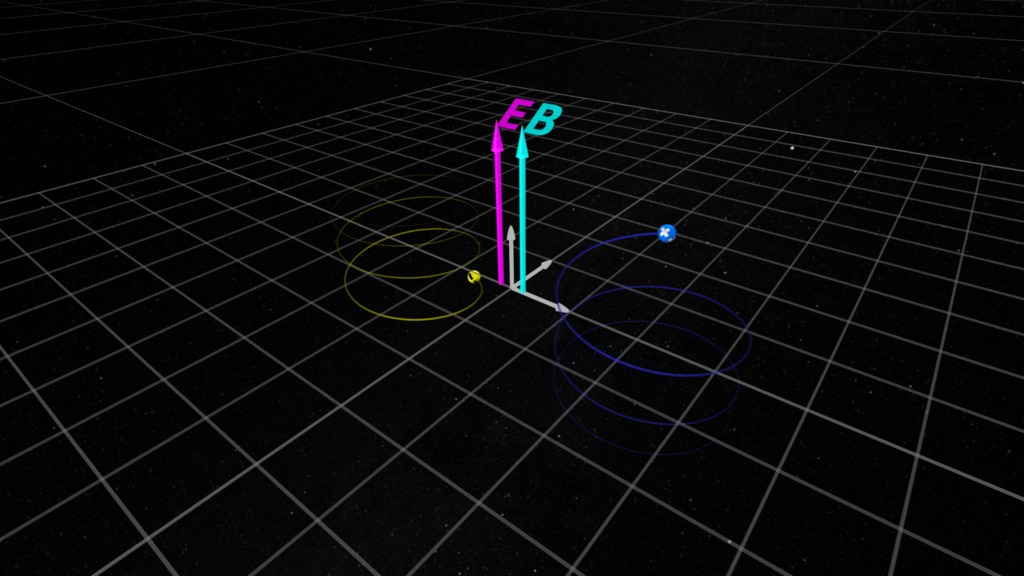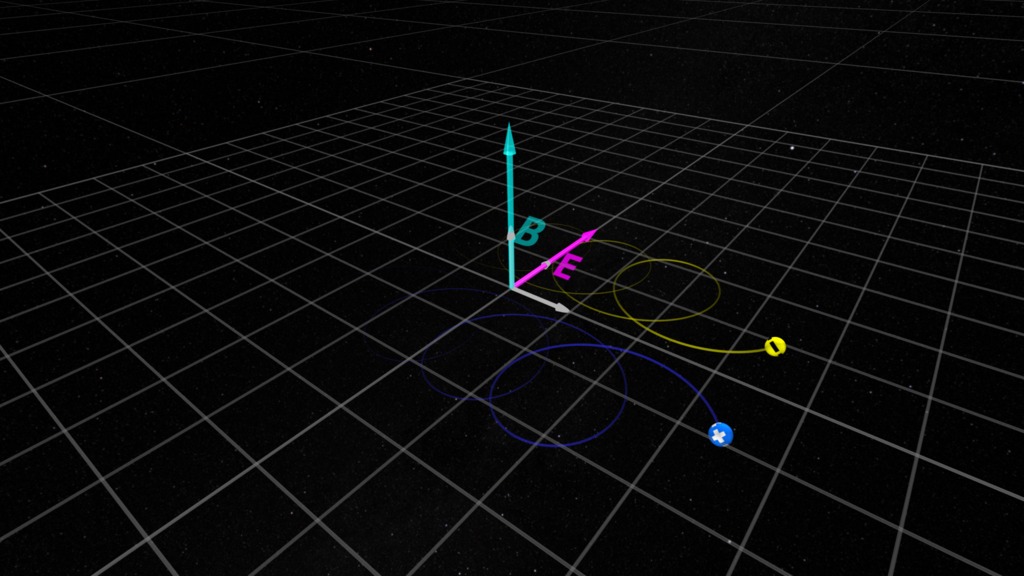Shock Drift Acceleration (SDA)
This visualization of particle acceleration across a shock is a simplied representation of shock drift acceleration (SDA) showing the motion of electrons (yellow) and protons (blue). It is presented with the same color table designations as other critters in our Plasma Zoo.
Particle acceleration mechanisms are one of the more challenging questions in space physics. Hot plasmas are generally very simple to understand, but occasionally we detect charged particles accelerated to unusually high energies that cannot be explained by a basic hot plasma. We usually find these high-energy charged particles associated with interfaces between domains of plasma - regions where a plasma dominated by one configuration of charges and magnetic fields, collides with a different configuration of charges and magnetic fields. This collision can generate changes in the field configuration which can accelerate charged particles.
One proposed mechanism for this acceleration is called shock drift acceleration (SDA), illustrated in this visualization. A blob of plasma on the left is colliding with plasma on the right. The region where they collide forms a layer (the vertical red band) representing the shock wave that forms. We have chosen a camera which travels along with the shock wave, so the wave is stationary to our camera. The region has a magnetic field (represented by cyan, or light green, arrows) directed out of the plane of the screen, towards the viewer. The magnetic field has a different intensity in the two regions. An electric field is also present (magenta arrows), directed 'up' in the view and the interaction of the two regions in the shock wave generates an increase in the electric field.
We launch a batch of electrons and protons in the left blob towards the region of the shock. In the magnetic field, the positive proton trajectories curve downward, while the negative electron trajectories curve upward.
A group of electrons (yellow, with '-' sign on them) with a range of speeds and directions, along with a group of 'protons' (blue, with a '+' sign on them) are launched towards the shock. Actually, the yellow particles are not quite electrons as their mass is large, set to only one-fifth of the proton mass, so their motion will stay in the scale of this screen view.
As the particles pass through the shock, they get a little 'push' from the slightly stronger electric field which exists there. Depending on the direction of entry and the charge of the particle, the field can either accelerate or decelerate the particle. Once they pass through the shock, they enter the region with a slightly stronger magnetic field which tightens the radius of their orbits. The new orbit may still be large enough to allow the particles to pass back into the increased electric field of the shock, adding a little more energy to the particle.
The E-cross-B drift moves electron and positive ions in the same general direction. But their gyro motions are still driven in opposite directions. Therefore, once the center of the gyro motion circle passes to the right side of the shock, each pass of the particles back into the shock allows them to gain a little more energy. Positive particles get a boost in the same direction as the electric field, while negative particles get a boost in the opposite direction to the electric field. They keep receiving this addition speed boost until they move clear of the shock.
Visualization of the Shock Drift Acceleration (SDA) mechanism with alternate labeling and colors.
For More Information
See NASA.gov
Credits
Please give credit for this item to:
NASA's Scientific Visualization Studio
-
Visualizer
- Tom Bridgman (Global Science and Technology, Inc.)
-
Scientist
- Lynn B. Wilson (NASA/GSFC)
-
Writer
- Mara Johnson-Groh (Wyle Information Systems)
-
Producer
- Genna Duberstein (USRA)
-
Technical support
- Laurence Schuler (ADNET Systems, Inc.)
- Ian Jones (ADNET Systems, Inc.)
Release date
This page was originally published on Monday, November 14, 2016.
This page was last updated on Sunday, January 5, 2025 at 11:09 PM EST.
